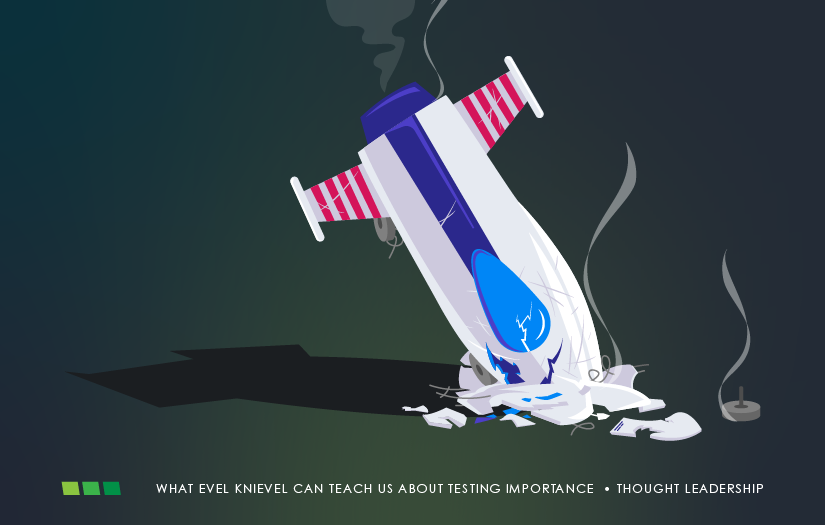Evel Knievel is a childhood hero of mine. We both hail from the beautiful city of Butte, Montana, and I used to watch in awe at his amazing stunts as I was growing up. So, when I got the chance to visit the Evel Knievel Museum in Topeka, Kansas with a few testing colleagues of mine, I couldn’t wait to see photos and videos of the streets, buildings, and people of my youth.
What I didn’t expect was that my younger self and my professional self would converge in that moment. But that’s what happened at the final piece on display – Knievel’s Skycycle X-2 rocket, designed by Robert Truax and Doug Malewicki. For those unfamiliar, this was the rocket Knievel used to try to jump the Snake River Canyon in Idaho in 1974. But the jump was unsuccessful as a canister malfunction caused the parachute to deploy early, nearly leading to Knievel’s death.
Next to the rocket in the museum rests a plaque that reads:
One more test opportunity by the Truax crew, and they would have surely noticed a faulty parachute canister.
“We just didn't have the time or budget to fully test," lamented Truax.
Let that sink in for a minute. The man who was responsible for the machine built to launch a human across more than a quarter mile of canyon didn’t fully test one of the most crucial elements. Granted, testing in the 1970s is not what it is today, but still, we see companies make these types of mistakes far too often.
.png?width=500&height=667&name=MicrosoftTeams-image%20(24).png)
Remember the false missile alert that went off in every Hawaii citizen’s phone a few years ago? That was due to a defect in the programming that no one either tested or caught. And nearly a decade ago, a medical device created to automatically deliver medicine dosages to patients had to be recalled after a software error that caused it to either delay dosages or over-dose. These are just two of countless examples you could find over the past 20 years of no testing due diligence leading to major issues.
Now, for the majority of us, our mistakes aren’t in life-or-death situations. But even these errors can lead to negative experiences worth millions of dollars. In fact, back in 2017, a company called Tricentis analyzed more than 600 software fails from more than 300 companies and learned that these issues caused $1.7 trillion in business losses for issues that affected 3.6 billion people.
It begs the question: why does this continue to happen?
No two situations are the same, but more than 20 years in testing has taught me that one of these two reasons are usually present:
1. Leadership within the organization has a “It’s just testing, how hard can it be?” mentality.
2. You don’t feel the pain until it’s too late, so it’s out of sight, out of mind.
To combat the first reason, the issue is not necessarily the difficulty of testing, but rather the knowledge of what to look for and how to proactively prevent issues. And the understanding that every change can create a ripple effect impacting areas of your organization you didn’t even think were related. Which brings us to the second reason. Testers are a lot like offensive linemen in football. You only hear about them when something goes terribly wrong. And yet, the five men who protect the quarterback are among the most valuable on the team.
Never allow yourself to run out of time or make excuses for a lack of testing. Because you never know what is going to happen in production. And like Evel, you don’t want to be stuck flying over a canyon with a parachute that deployed too early.


.png?width=500&height=667&name=MicrosoftTeams-image%20(24).png)